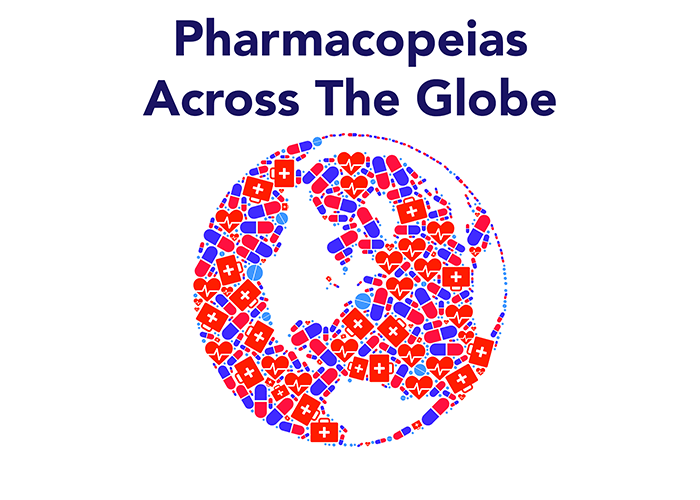At this point, we are no stranger to global health crises. But these crises extend outside of pandemics to regular everyday access to quality healthcare, as well. Standardization of care following evidence-based best practices across the globe improves the world population’s health. Pharmacopeias work across borders to collaborate on best practices and knowledge, improve access to healthcare, and establish worldwide practices.
In the United States, the USP operates as a nongovernmental agency that is practitioner based. Its global counterparts often operate as a portion of the ministry of health for each of their respective countries or federations.
So let’s look at some of the pharmacopeias functioning around the world and discuss their organizations and applications.
The United States Pharmacopeia - National Formulary
The USP-NF is the United States Pharmacopeia – National Formulary (spelled “pharmacopeia” in the US, but “pharmacopoeia” elsewhere). It is a nongovernmental agency that writes best practices for over 6,800 monographs applicable to over-the-counter and prescription products, medical devices, supplements, and other healthcare related products. It is the most comprehensive USP in the world and put to use in 150 countries while being integrated into law in 40 countries. Currently, its focus is on striving to determine the future of regulatory requirements for advancing medical technologies.
The European Pharmacopoeia
Similar to the USP-NF, the European Pharmacopoeia (EP) is a commission of the Council of Europe and is designed to improve public health by publishing standards for the quality of both medicine and its components. The common practices published in the EP facilitate easy movement of medicinal and healthcare products around Europe.
The EP is not exclusively used in Europe, though. It is used internationally and the Commission works closely with the worldwide users.
The British Pharmacopoeia
The British Pharmacopoeia (BP) is the “only comprehensive collection of authoritative official standards for UK pharmaceutical substances and medicinal products”. It is published in annually in August and put into effect the following January. It incorporates monographs and texts from the EP, as well as encompassing the Veterinary British Pharmacopoeia.
It serves those in the UK who research, develop, manufacture, and monitor quality in pharmaceuticals and medical devices. It covers general notices, general and specific monographs, active ingredients, excipients, formulated preparations, herbal drug products, materials for homeopathic uses, blood products, immunological products, radiopharmaceutical uses, and more.
The Japanese Pharmacopoeia
The Japanese Pharmacopoeia (JP) serves as an official document to define the criteria, standard, and specifications for testing methods that will ensure the safety and quality of medicine in Japan. The JP describes each monograph of drugs deemed important for healthcare and medical treatment, while working to make improvements based on the latest science and technology advancement. The committee is also dedicated to making prompt revision as necessary while ensuring transparency.
The International Pharmacopoeia
In 1951, the World Health Organization established the International Pharmacopoeia (Ph. Int) and published the first volume. Members of the WHO Expert Advisory Panel on The International Pharmacopoeia, the WHO Expert Committee on Specifications for Pharmaceutical Preparations and other specialists collaborate to make this a comprehensive document outline the test methods and specifications for priority medicines. WHO allows for input from regulatory authority, national drug control laboratories, WHO centers, and manufacturers.
The Indian Pharmacopoeia
The Indian Pharmacopoeia (IP) is published by the Indian Pharmacopoeia Commission (IPC) an autonomous institution in the Indian government’s Ministry of Health and Family Welfare. Like other pharmacopoeias throughout the world, it functions to regularly update standards for drug ingredient quality. The IPC also publishes the National Formulary of India.
The main goal of IP is to define identity, purity, and strength standards for medicines used in the treatment of both humans and animals in India.
The Chinese Pharmacopoeia
The Pharmacopoeia Commission operates under the Ministry of Health of the People’s Republic of China and is responsible for publishing the Chinese Pharmacopoeia (ChP). This is the official compendium of standards of purity, testing, precautions, storage, strength, and dosage for both traditional Chinese and western medicines. This commission is also responsible for evaluating how well the CP and national drug standards are implemented, as well as organizing the selection of medicines listed and Chinese Approved Drug Names.
International Collaboration of Pharmacopoeias
WHO works with pharmacopoeias across the world to promote collaboration. They hosted meetings of the World Pharmacopoeias to maximize this collaboration. For example, the World Pharmacopoeias took a solid step forward in cooperation and coordination by developing a rapid alert system that improves the exchange of information when it comes to taking urgent action during emergencies. In 2019, the EP shared how a family of anti-hypertensive medicines (sartans) was contaminated, putting the world’s supply at risk. The EP outlined the measures it had implemented for rigorous control of impurities and limiting additional damage.
The last meeting of the World Pharmacopoeias was in 2019 and included the publication of a new website, hosted by WHO, which includes an index of World Pharmacopoieas, as well as their relevant authorities. This website also links to best practices.
Even though this meeting took place before COVID-19, it showed the promise of intense worldwide collaboration. Some of the largest pharmacopeias were present, which included Europe, Indian, Indonesia, Japan, Russia, USA, China, and Brazil along with close to 50 other pharmacopoeias.
In a post-pandemic world, we are excited to see the World Pharmacopoeias continue to collaborate, bringing healthcare quality standardization across borders. Improved international healthcare is only possible when the world comes together to collaborate and improve access to standardized practices.
So how can you stay up to date with the changes we are bound to see through continued collaboration of some of the best medical minds in the world? We would recommend following along with our Knowledge Center!
Our Knowledge Center compiles our experience as the world’s clean air experts – and it is now all available for free. Stay up to date on industry best practices, take advantage of our white papers that break down difficult topics, and enjoy our educational blog posts and free webinars.


